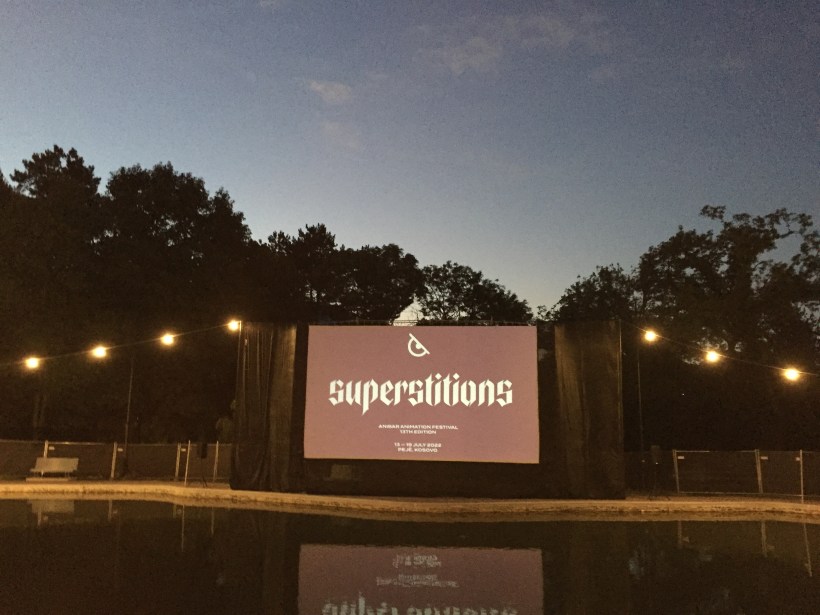
Anibar Animation Festival © Marie Ketzscher
“What’s your name, where do you come from? Thanks for being here.” During the storyboard exhibition at the Kosovan Anibar Animation Festival, the volunteers eagerly seek out human contact and interaction. And they also talk about themselves. They are all around 15 years old and have known the festival since their early childhood days. What do they intend to do after school? Study animation, of course, at the Animation Academy founded several years ago by the NGO that runs the Anibar festival.
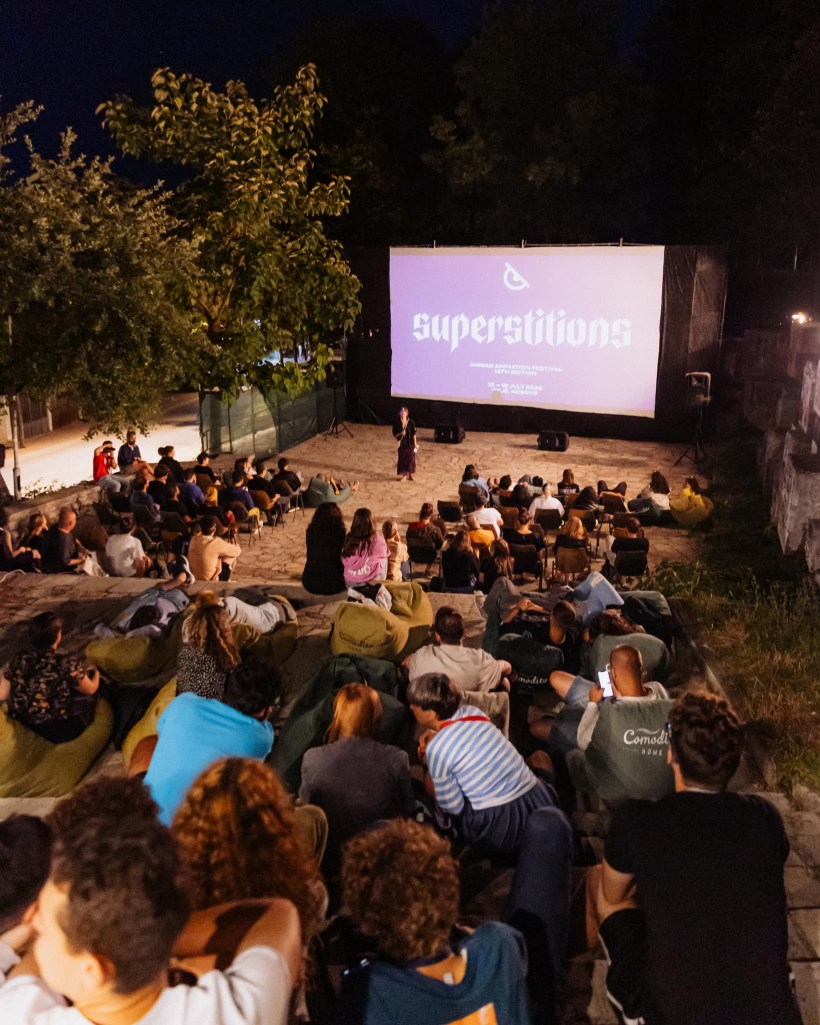
Festival Athmosphere © Anibar Animation Festival
This enthusiasm, which may perhaps be a bit excessive for chilled West Europeans and seem downright American, is something I encountered the whole time during my visit to the Anibar festival that was held from 13 to 19 July 2022 in the town of Peja. A town in which the muezzin call to prayers can be heard (about 95% of the Kosovars are Muslim), yet the streets are named after Madeleine Albright and the like. Where the cars roar and honk, yet just a few minutes further along, a wonderful mountain river patters and burbles. But I soon realise: This enthusiasm is real. And it is all connected to this “new-born” country I find myself in – together with its animation industry that is inevitably just as young, one that provides hope and the scope for possibilities to many young people here especially. Which is critically important, because ultimately, on paper, Kosovo is still “merely” a de-facto state that remains unrecognised by many countries, with the Kosovars only permitted to visit the Schengen countries with visas. And Kosovo’s population is very young as well, which is perhaps the reason why they have such a yearning for exchanges (Priština has the youngest population throughout all of Europe with an average age of about 30 years old). Thus, from the very beginning, the international filmmakers coming to Peja have also brought with them the hope of gaining contacts, together with an end to the country’s isolation.
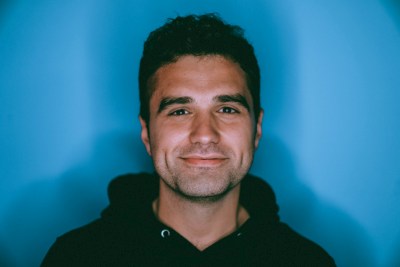
Vullnet Sanaja – Founder and Executiv Director © Anibar Animation Festival
“In other countries, you get interest in making animated films first of all, then an animation school to teach you how to make these films, then these animated films get screened in the national cinemas – and at some point the people start a festival to showcase international animation films.” This is how Vullnet Sanaja, who founded the festival’s NGO of the same name in 2009-10 together with his pal Rron Bajri (when Sanaja was 17 and Bajri 16), describes the genesis of many (animation) film festivals. Then he grins mischievously: “But in our case, it was the other way around – we started with the festival.” Meaning that with Anibar, the initial idea for creating a festival came from these two boys on the verge of adulthood. They wrote to Malcom Turner, the festival director at the Melbourne International Film Festival, received some films and got the first festival edition up and running. They reached out openly and frankly to people in the global animation network, announcing their intentions and repeatedly saying: “Help us make the festival.” With the result being that today, thirteen years later, the Anibar festival is, together with the Dokufest festival in Prizren, a further beacon film event in Kosovo, with the national television present and reporting from it on a daily basis.
With the Animation Academy, it has proven possible to extend the scope and reach of the Anibar festival even further. It was founded in 2017 in Priština and Peja as the first animation film school in Kosovo, with the aim of establishing an animation community in this young country. The studies are short but intensive: In just six months, the students learn the basics of animation, storytelling, directing, software aspects and sound design, or they attend courses that focus on VR or AR. More than 60 filmmakers have graduated from the Animation Academy by now, who then go on to teach the current batch of students there. The lecture rooms in Peja are situated in the Jusuf Gervalla cinema, the heart of the festival, where the team’s other festival offices are also located. Not only that, the Anibar team members are even cinema operators: The cinema, which was built in 1955, was facing closure after the Kosovo war, with the intention being to privatise it. But the Anibar team conducted a media-savvy campaign to keep it open – and gained the right from 2016 on to continue using it as a cinema for 15 years. Non-animation film enthusiasts are also benefiting from this: Other film events and festivals now also screen their productions here.
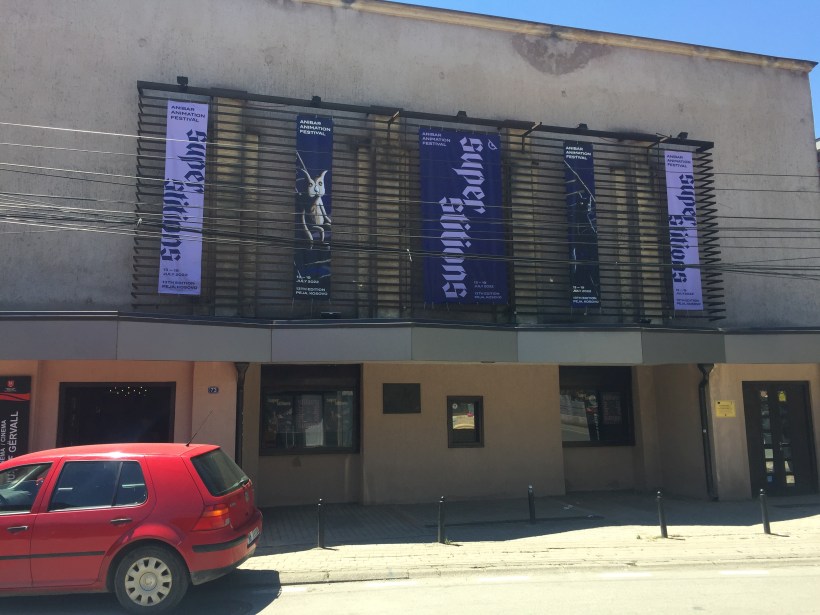
Festival Cinema © Marie Ketzscher
In the meantime, not only has the Anibar festival been able to obtain an interim usage permit for the cinema, it is also bringing new life to other local vacant buildings with its festival events, or converting them into project and work spaces for the Anibar network. And many of the former volunteers now work for the NGO, some of them even fulltime. The idea behind this expansion of the Anibar network is not to achieve growth for its own sake, but rather to provide cultural activities to all the residents of
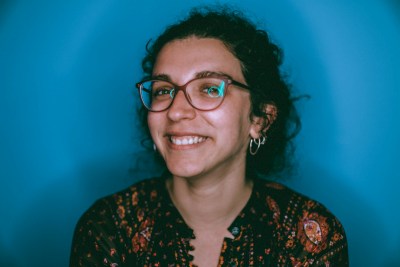
Arba Hatashi, festival director © Anibar Animation Festival
Peja, as Vullnet Sanaja explains. In the future, he would also like to move the cinema screenings further away from the traditional projection room and into the local communities.
Anibar goes local, so-to-speak, in the style of the “Berlinale goes Kiez” festival section that brings Berlinale films to local arthouse cinemas in Berlin neighbourhoods. Yet for that, the Anibar festival has long been frequented by more than just the animation community: On each festival evening, a different music genre takes centre stage at the after parties – and the open-air “Lake Cinema” is transformed into an outdoor concert, followed by a DJ set. When the hip hop crew accompanying the Albanian rapper BimBamma performed there, several thousand visitors from across Kosovo descended on this placid town. This demonstrates the immense appeal of such a young festival, one that, with its 24-year-old festival director Arba Hatashi (who first began here as a volunteer), intends to remain true to its youthful traditions.
Thus it is no surprise that after a few days, it no longer seems so absurd as it did perhaps before coming here that these young people have managed to set up and run a festival. In fact, it all feels normal and logical somehow – especially because there were no daunting animation models, prior structures or other quagmires here that would have made it difficult to found the festival. And a further factor also played a critical role, as Sanaja explains: “The world was full of possibilities back then. That’s how it is when you’ve experienced war, the worst thing imaginable, presumably. And after a war, the world is full of endless possibilities.”